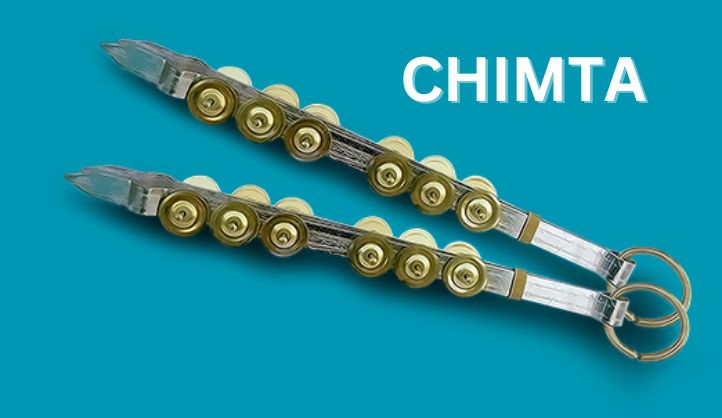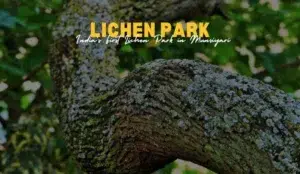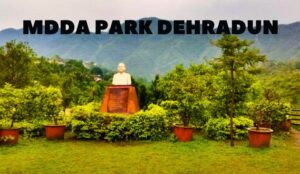In the serene landscapes of Uttarakhand, where the majestic Himalayas kiss the sky, music flows as naturally as the rivers. The region is home to a variety of traditional instruments that shape its vibrant musical heritage. Among these, the Chimta stands out for its unique sound and cultural significance. Let’s explore the fascinating world of the Chimta and its role in the musical traditions of Uttarakhand.
The Instrument
The Chimta, often referred to as fire tongs in other contexts, is a traditional percussion instrument made of a long, flat, metal strip folded in half with metal jingles attached along its length. When the two halves are struck together, the jingles produce a distinctive, sparkling sound that adds a lively rhythm to any musical performance.
Historical Roots
The Chimta has a rich history that dates back centuries. Originally, it served a dual purpose as a household tool and a musical instrument. In Uttarakhand, as in other parts of North India, it evolved into a significant part of the folk music tradition. Its portability and ease of use made it a popular choice for accompanying various forms of traditional music and dance.
Cultural Significance
Festivals and Celebrations
In Uttarakhand, it is a staple on many festive occasions. Its bright, metallic sound is synonymous with joy and celebration, making it a perfect accompaniment for festivals like Makar Sankranti, Holi, and Diwali. The Chimta’s rhythms energize gatherings and encourage communal participation in singing and dancing.
Folk Dances and Songs
It is an essential part of several traditional folk dances and songs. In dances like Chholiya, which is performed at weddings and festivals, the Chimta’s lively beats drive the dancers’ movements. In folk songs, it complements the melodies with its rhythmic jingles, adding a layer of excitement and texture to the music.
Spiritual and Religious Context
Beyond its role in entertainment, it also holds spiritual significance. It is often used in religious ceremonies and rituals to create an atmosphere of reverence and devotion. The instrument’s sound is believed to have a purifying effect, driving away negative energies and invoking blessings from the deities.
The Art of Playing Chimta
Playing the Chimta is both simple and complex. On the surface, it involves striking the two halves together to produce sound. However, mastering this instrument requires a sense of rhythm and timing. Skilled players can create intricate patterns and rhythms that enhance the overall musical experience. The versatility of it allows it to be used in various musical contexts, from solo performances to large ensembles.
Some Other Traditional Instruments Of Uttrakhand
Uttarakhand, with its rich cultural diversity and heritage, boasts several traditional instruments that reflect the region’s vibrant cultural identity.
Damru
The damru is a small two-headed drum shaped like an hourglass. It is primarily associated with Lord Shiva and is often played during religious rituals, especially during devotional songs (bhajans) and ceremonies in temples across Uttarakhand.
Dhol
The dhol is a large barrel-shaped drum with two drumheads, played with sticks. It is widely used in folk music and dance performances in Uttarakhand, adding rhythm and energy to traditional folk songs and celebrations.
Dholki
The dholki is a smaller, barrel-shaped drum with a single drumhead, played with hands or sticks. It accompanies folk singers and musicians during festive occasions, weddings, and cultural gatherings in Uttarakhand.
Ransingha
The ransingha is a traditional brass trumpet-like instrument used by shepherds and pastoral communities in Uttarakhand. It produces a loud and resonant sound and is played during festivals, processions, and community events.
Thali
The thali is a set of metallic plates or cymbals that are struck together rhythmically. It is used to accompany folk dances like the Chholiya and Barada Nati, adding a percussive element to the lively and energetic dance performances.
Kartal
The Kartal is a pair of wooden clappers with metal jingles attached to them. It is held in the hands and played by striking the clappers together rhythmically. Kartals are integral to devotional music, particularly during Kirtans and religious ceremonies.
Preserving the Tradition
In a world where modern instruments and electronic music often dominate, preserving the tradition of playing the Chimta is crucial. Efforts are being made by cultural organizations, schools, and local communities in Uttarakhand to keep this tradition alive. Workshops and educational programs are introduced to teach the younger generation about the Chimta and its cultural importance.
Conclusion
The Chimta is more than just a musical instrument; it is a symbol of Uttarakhand’s rich cultural heritage. Its sparkling sound captures the essence of the region’s vibrant traditions and joyous celebrations. As we embrace the future, it is essential to honor and preserve such cultural treasures, ensuring that the rhythms of it continue to echo through the valleys and hills of Uttarakhand for generations to come.
Whether you find yourself amidst a lively festival or a serene temple it will guide you through the heart of this enchanting region, offering a glimpse into its soul through the timeless language of music.
FAQs About Chimta in Uttarakhand
1. What is a Chimta?
It is a traditional percussion instrument made from a long, flat metal strip folded in half with metal jingles attached along its length. When the two halves are struck together, the jingles produce a distinctive, sparkling sound.
2. What is the cultural significance of the Chimta in Uttarakhand?
It is significant in Uttarakhand’s cultural and musical heritage. It is commonly used in festivals, folk dances, religious ceremonies, and community celebrations, adding lively rhythms to various traditional music forms.
3. On what occasions is the Chimta typically used?
It is used on a variety of occasions, including festivals like Makar Sankranti, Holi, and Diwali, weddings, folk dances such as Chholiya, and religious ceremonies.
4. How is the Chimta played?
It is played by striking the two metal halves together, causing the attached jingles to produce sound. Players can create different rhythms and patterns by varying the speed and intensity of the strikes.
5. Can anyone learn to play the Chimta?
Yes, anyone with an interest in traditional music can learn to play the Chimta. While it is relatively simple to start, mastering the instrument requires practice and a good sense of rhythm.





